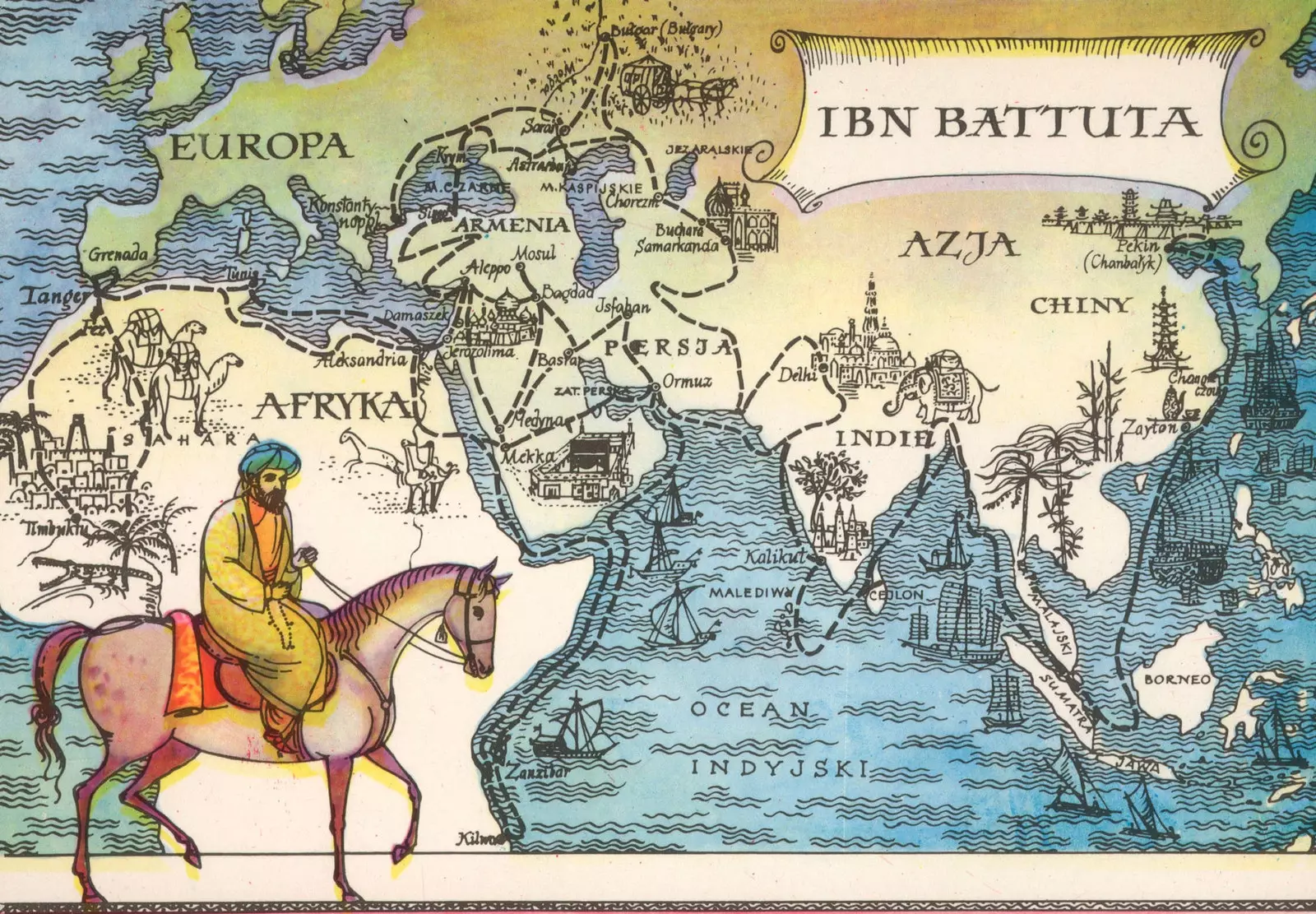
Ibn Battuta and the map of his travels, illustration by Hanna Balicka-Fribes
Says an old Arab proverb: “who lives sees, but who travels sees more”. And it was precisely them, the Muslims, who were the greatest travelers, cartographers and geographers of the Middle Ages.
Therefore, those who saw the most. While in the West dark and bloody times were lived, after the failure of the Crusades, other cultures began to travel and expand. And it was precisely that people of shepherds who embraced Islam, the most prominent of them all.
In contrast to what happened in Europe, Muhammad's faith stretched from the Atlantic to the Pacific, becoming the great civilization of the late Middle Ages. It was a traveling people, interested in commerce, science, literature, law, the arts and conquest.
It is not easy to be a Muslim without also being a traveler, For, although other religions encourage pilgrimage to holy places, only the Koran imposes on its faithful the solemn obligation to perform the hajj, or journey to the holy city of Mecca.
So much so that the greatest walker in the Arab world and throughout the medieval period He began his eternal walk fulfilling the fifth pillar of Islam: the hajj. It was a young Moroccan named Shams ad-Din Abu Abd Allah Muhammad ibn Muhammad ibn Ibrahim al-Luwati at-Tanyi , who, under the most comfortable name of Ibn Battuta, starred in the greatest journey of the time.
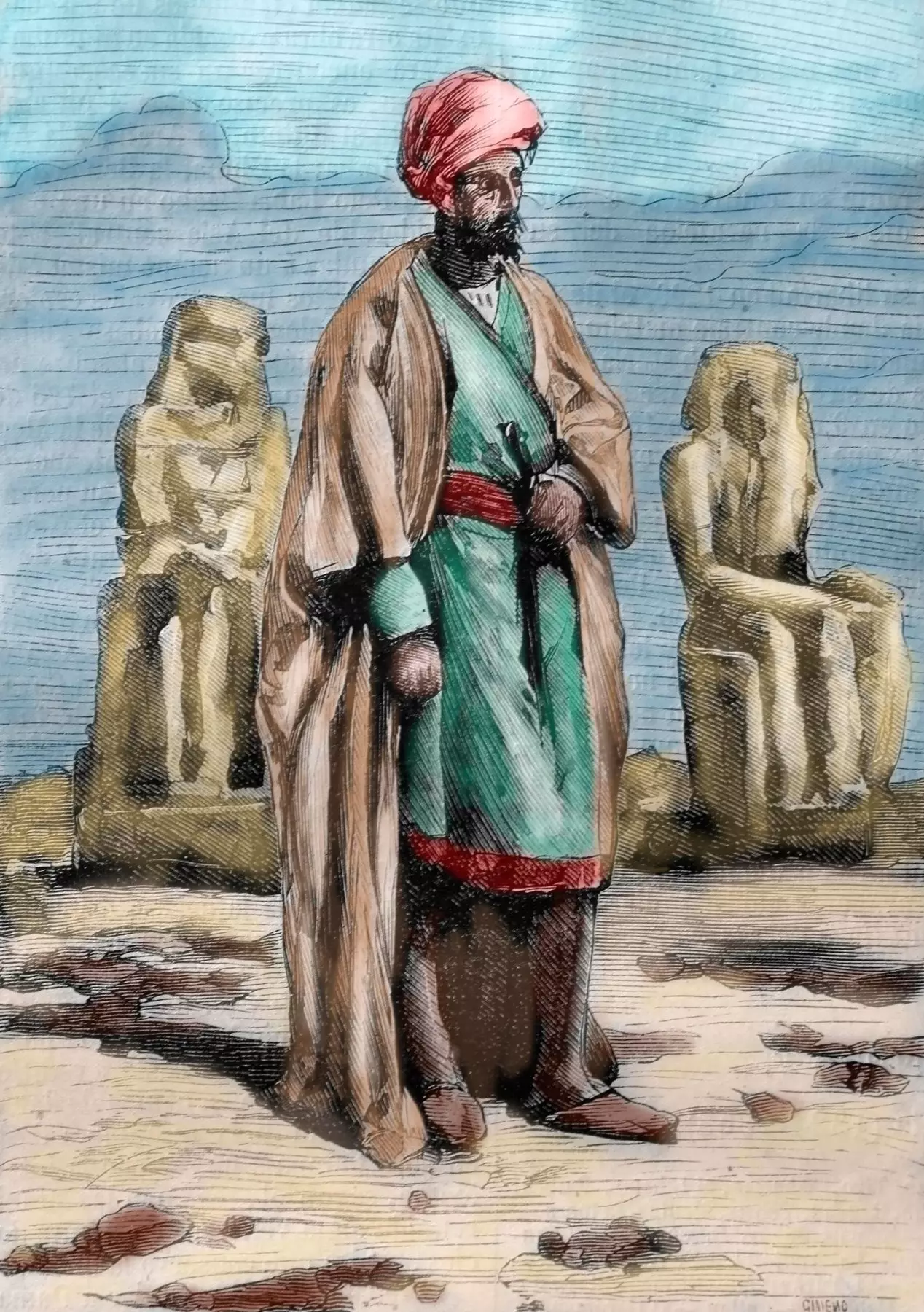
Ibn Battuta in Egypt. Illustration by Leon Benett
THE FOOTSTEPS OF A PILGRIM
born in 1304 , in the always cosmopolitan city of Tangier, he grew up in a cultured and wealthy family. On June 13, 1325, at the age of twenty-one, he left the comforts of home and set out to carry out the Islamic precept which compels every able-bodied adult Muslim to travel to Mecca.
But this pilgrimage was only the first stage of a long journey that ended up becoming much more, Well, he would end up traveling 120,000 kilometers for almost 30 years; a distance three times greater than that traveled by Marco Polo himself . Not for nothing happens to be the greatest globetrotter of all time.
Ibn Battuta left Tangier a year after the death of Marco Polo, as if fate wanted him to take over from another great explorer.
On his route to Mecca, which he called the "city of trust," he traveled through North Africa, being the fascinating Alexandria, the great city founded by Alexander the Great, his first stop. But he was when he got to Cairo when Egypt seduced him and showed him the strength of a great Muslim metropolis.
After his passage through the Land of the Pharaohs, he continued his journey towards Mecca, taking the least common path of all, following the Silk Road and joining Bedouin caravans through the Arabian desert.
in his book The Medieval Travelers , the teacher of Medieval History, Maria Serena Mazzi talks about what the desert experience meant for Ibn Battuta: "It is ambiguous, disturbing and exultant at the same time depending on what or who he meets, even if he was already used to hot and naked landscapes."
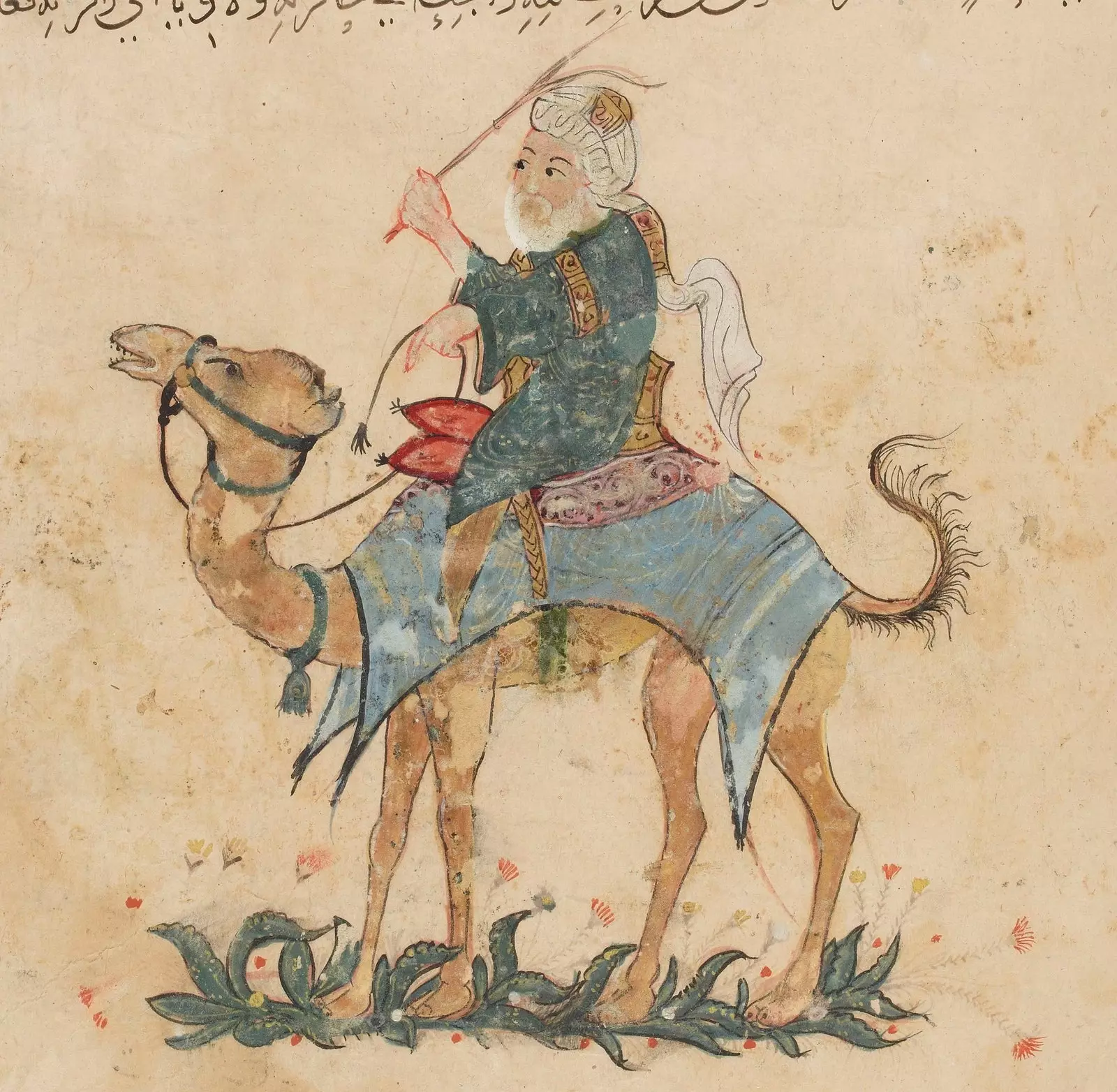
Arab traveler, illustration from 1237, work of Yahya ibn Mahmud al-Wasiti
BEYOND MECCA
Palestine, Lebanon and Syria were his next stops. And, finally, he reached the final destination of his pilgrimage, after visiting Damascus , where he spent Ramadan, and medina , the city where Muhammad is buried.
once reached Mecca , Ibn Battuta, in communion with the assembled Muslims, beyond tribes and races, performed the circumambulation ritual: go around the Kaaba – the most important holy place in Islam – seven times, in an anti-clockwise direction.
But the traveler, who had taken a liking to letting himself be surprised by the world, he continued his itinerary to other holy places of Islam, such as Meshed and the tomb of the holy Ali al-Ridá. And, after fulfilling the devout duties of Muslim pilgrimage, he kept going through places like Iraq, Khuzistan, Fars, Tabiz and Kurdistan to end up in Baghdad, the great city to which all the poets sang and which, on the other hand, now seemed to him to be in decline, after being besieged, long ago, by the Mongols.
The Tangerine returned to make a pilgrimage to the city of Mecca on two more occasions, but not before continuing to explore the confines of the Islamic world. An expert in following the less traveled routes, he embarked on a long sea voyage that took him to the eastern African coast and the Persian Gulf, where Arabic was not the common language: Oman, Yemen, Ethiopia, Mogadishu, Mombasa, Zanzibar and Kilwa.
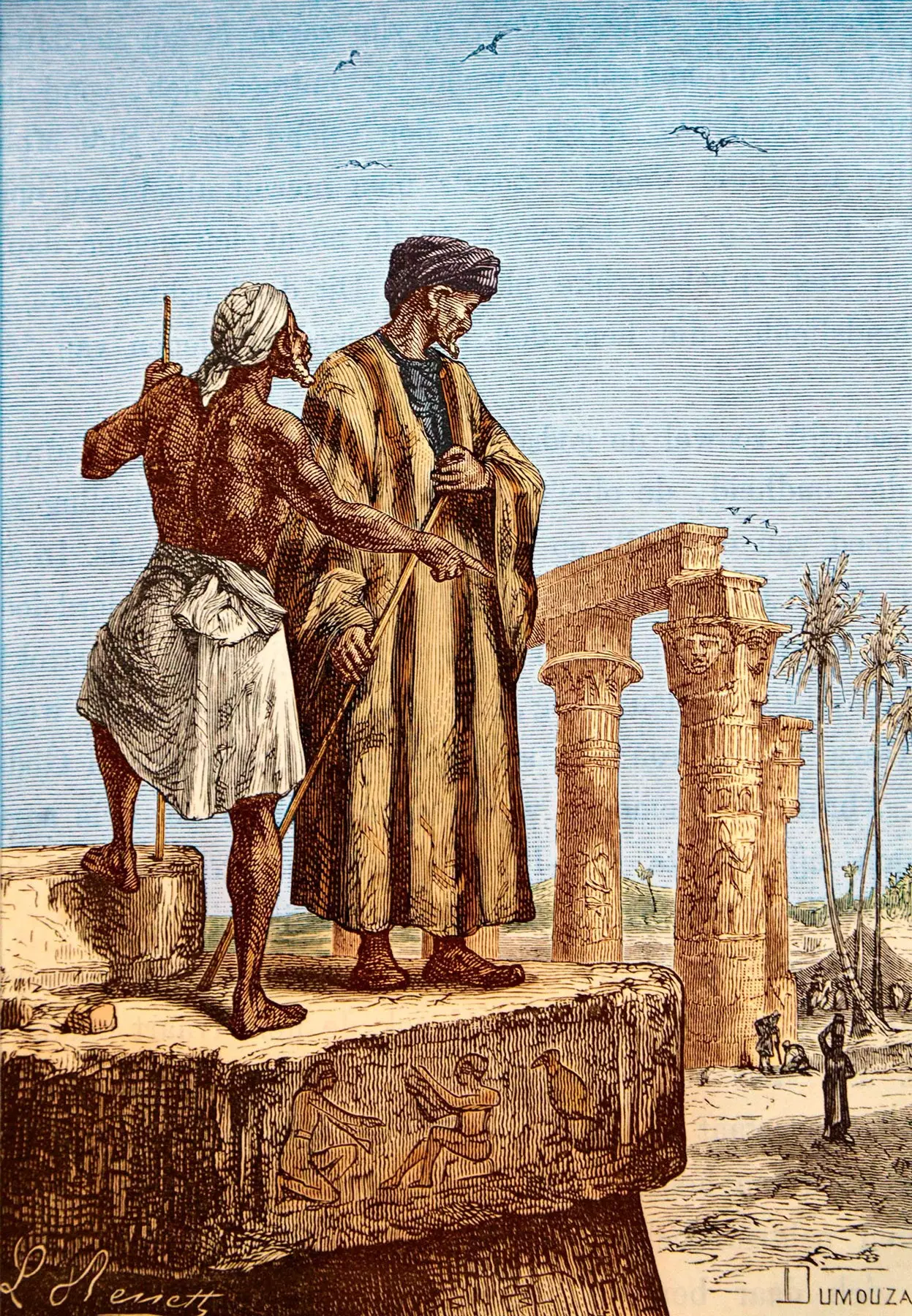
Ibn Battuta in Egypt, illustration by Léon Benettpor, engraving by Paul Dumouza
But Ibn Battuta's great journey had only just begun. The Moroccan crossed Turkey, the Black Sea, Crimea and ended up entering the territories of the feared great Khan , where, according to his own account, he was received by him with great luxury and did him the honor of sharing some of his official wives. He even accompanied one of them to Constantinople , where he first came into contact with the non-Islamic world.
At the age of 28, he first saw the Indus Valley, where he ended up spending nearly a decade. There, and thanks to his years of study, while in Mecca, Ibn Battuta was employed as a qadi (judge) by Sultan Muhammad Tuguluq. He was India the great jewel in the crown of his journeys and his memories, since a third of his rihla is devoted to his experiences on the subcontinent.
Over time, and knowing that the sultan had begun to distrust him, Battuta felt in danger and requested permission to carry out his fourth pilgrimage to Mecca, but the monarch offered him another alternative: to be his ambassador to the Chinese court. Given the opportunity, both to get away from him and to visit new lands, Ibn Battuta chose not to disobey.
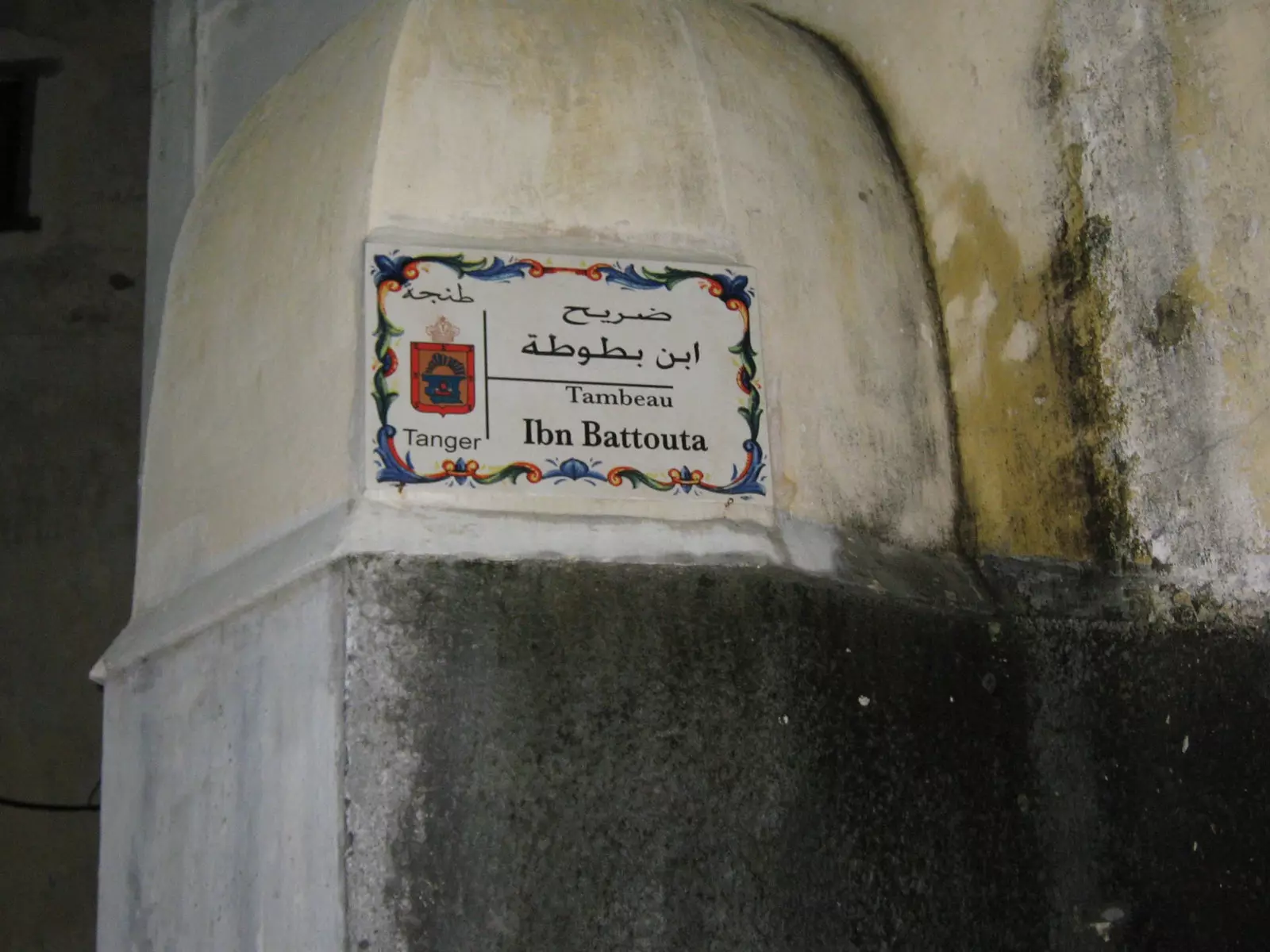
Mausoleum of Ibn Battuta in Tangier
THE CHINESE ADVENTURE
The adventurer set sail for China, landing first in the Maldives, where he spent more time than he intended and ended up getting married on several occasions.
And from there he went to Ceylon, present-day Sri Lanka, where Adam's Peak is located, a place of pilgrimage for Buddhists, Muslims and Hindus . It is a huge conical mountain over 2,000 meters high, which has different attributions, depending on the religion. At its top is a footprint of considerable proportions, belonging according to tradition to Adam, who put his first foot there, the day he was expelled from Eden.
But Battuta's journey was plagued with eventualities and, when he returned to his sea route, a strong storm destroyed his ship. As luck would have it, a rescue party saved him, only to be later attacked by a Hindu pirate ship. Was he destined never to set foot on Chinese territory?
Solved that, Ibn Battuta successfully retraced his path, passing through Chittagong, Sumatra, Vietnam and finally reached Quanzhou, in the province of Fujian, China. From where he traveled to other cities such as Canton.
In his rihla, he claims to have traveled even further north, but there are reasonable doubts that he wandered around China as much as he presumes , since his story is weak in terms of descriptions and personal experiences.
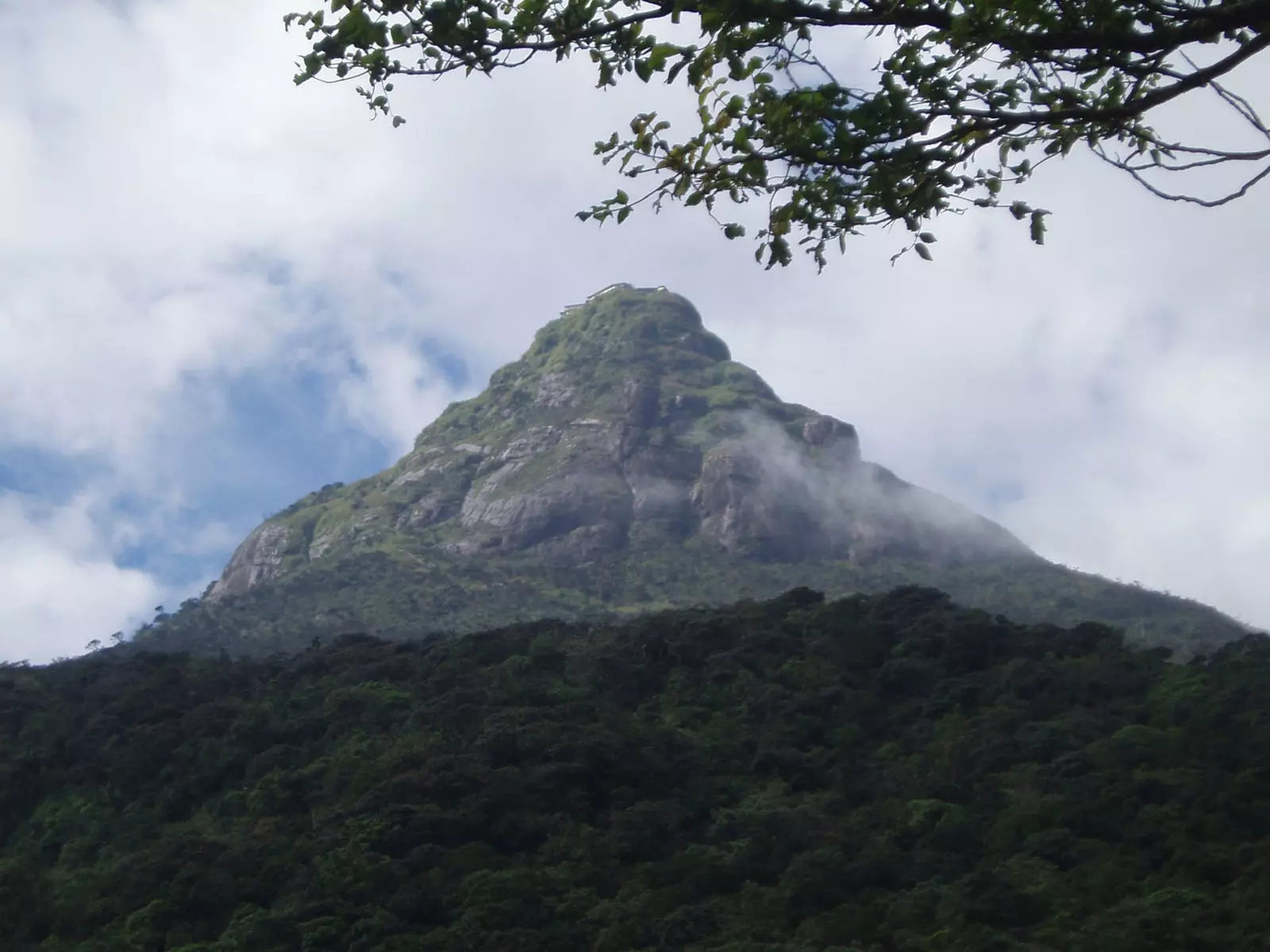
Mount Sri Pada, or Adam's Peak
BACK HOME
After his eastern journey, Ibn Battuta decided to return. This time, he home. To a home he hadn't visited in over a decade. It was the year 1347 and now he was a man over forty years old who was crossing the Persian Gulf back to his native Morocco.
On his return, he returned to places previously visited such as Sumatra or Damascus, where he learned of the death of his father, 15 long years ago. At that time, the black plague had already begun to spread throughout the world and the tangerine witnessed the havoc it caused wherever it went.
With home always in mind, he still had time to comply with his fourth pilgrimage to Mecca. and to navigate to Sardinia, Tunisia, Algeria and, finally, Morocco where, before arriving at his house, he learned that his mother had died from that terrible pandemic.
Nevertheless, his stay at his house did not last long. Hardly having time to share with his compatriots the stories of his adventures and exploits, he decided to visit the north, cross the Strait of Gibraltar on a small coaster and discover the wonders of Al-Andalus.
His restlessness called him to keep moving throughout all of Islam and his visit to the Muslim kingdom of the Iberian Peninsula became his closest approach to the Christian world.
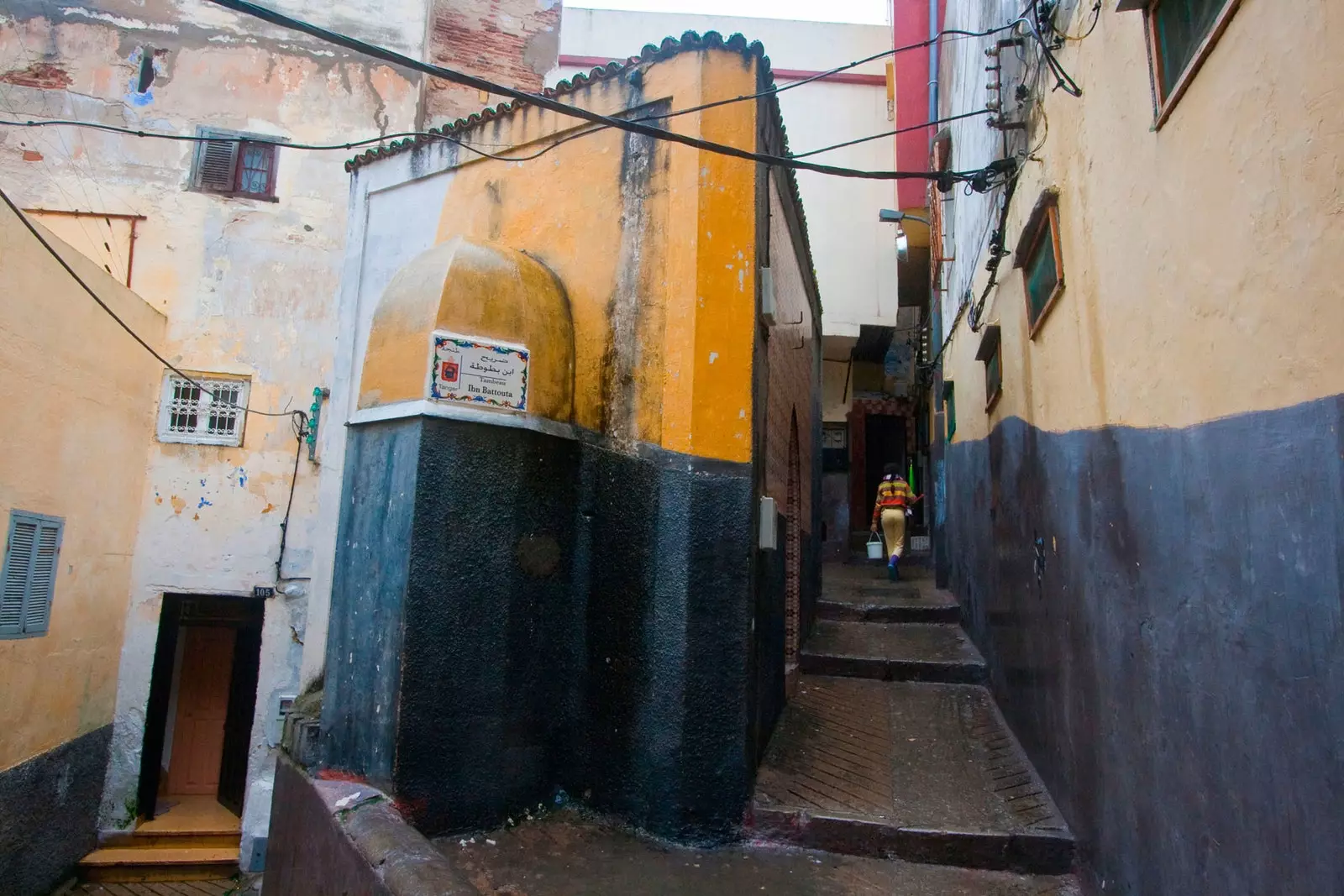
Tomb of Ibn Battuta in Tangier, Morocco
MUCH MORE SOUTH
It is in this new globetrotting chapter where he became more noticeable the sense of respect heightened by his adventures. Battuta, who left his home, long ago, possessing iron and immutable religious convictions, since his uncompromising asceticism was more than remarkable, He had made the word “coexistence” a companion, not only to his physical journey, but also to the one that traveled through his soul and that opened his mind.
After his Andalusian incursion, his tireless curiosity led him to visit a part of Muslim soil that, strange as it may seem, was still unknown territory: his own country. The Tangerine spent time in Fez, which he considered “the most beautiful city in the world”.
At the end of 1351, the sultan of Morocco commissioned him to carry out a new expedition. He was to explore a series of unknown territories that lay much further south, in the Sub-Saharan Africa. Specifically, the semi-legendary empire of Mali, where precious goods such as gold, salt and slaves came from.
For it, he crossed the Atlas, the Sahara Desert in a caravan –guided by the touaregs, the indomitable blue men– and had to cross the spine of the Niger River. On dark-skinned Islam and what he found there, Ibn Battuta exposed an exceptional source of geographical, political, social and religious data in his travelogue.
Thence, he again took the waters of the Niger to go to Timbuktu where, although in times of Ibn Battuta it did not yet exist, is the Andalusian Library of Timbuktu , created by an exiled family from the Iberian Peninsula after the fall of Al-Andalus.
While in Niger, he received the news that he had to return home. That was Ibn Battuta's last trip.
ABOUT PILGRIMS THINGS
The traveler's homecoming could be perfectly summed up by the words of Joachim du Bellay when he wrote: “Happy who, like Ulysses, undertook a wonderful journey and, when he returned, he was able to tell about it” , because after his intense journey, which led him to comb the confines of Islam, he returned to the home that saw him leave when he was young and in which he never found his parents alive again.
Once there, at the age of 54 and at the suggestion of the sultan of Morocco, he dictated his travels to the Granadan scholar Ibn Yuzayy, who turned his comings and goings into written words in the form of a rihla –or travel narrative– and that, surely, he added literary quotes of his own harvest, poetry and even imaginary elements to the work.
This literary genre, which dances between the descriptive-narrative and the mythical-legendary , appeared in the twelfth century, thanks to Muslims from the West, such as Andalusians or Moroccans, who they wrote down the incidents and knowledge acquired during their pilgrimages to Mecca and the great centers of knowledge, such as Damascus, Cairo or Baghdad.
Ibn Battuta's rihla was called Gift of curious about pilgrim things of wonderful cities and trips , although, like himself, he came to us with a more abbreviated and easy-to-remember name: Through Islam.
It is the most faithful portrait that exists of the geography and history of the entire Muslim world during the Middle Ages. “Ibn Battuta did not intend to explore unknown lands and discover unknown cultures, but tour the Islamic world to have a complete vision of it. This is the content of the Rihla”, writes the journalist Pedro Eduardo Rivas Nieto in his work History and Nature of Travel Journalism.
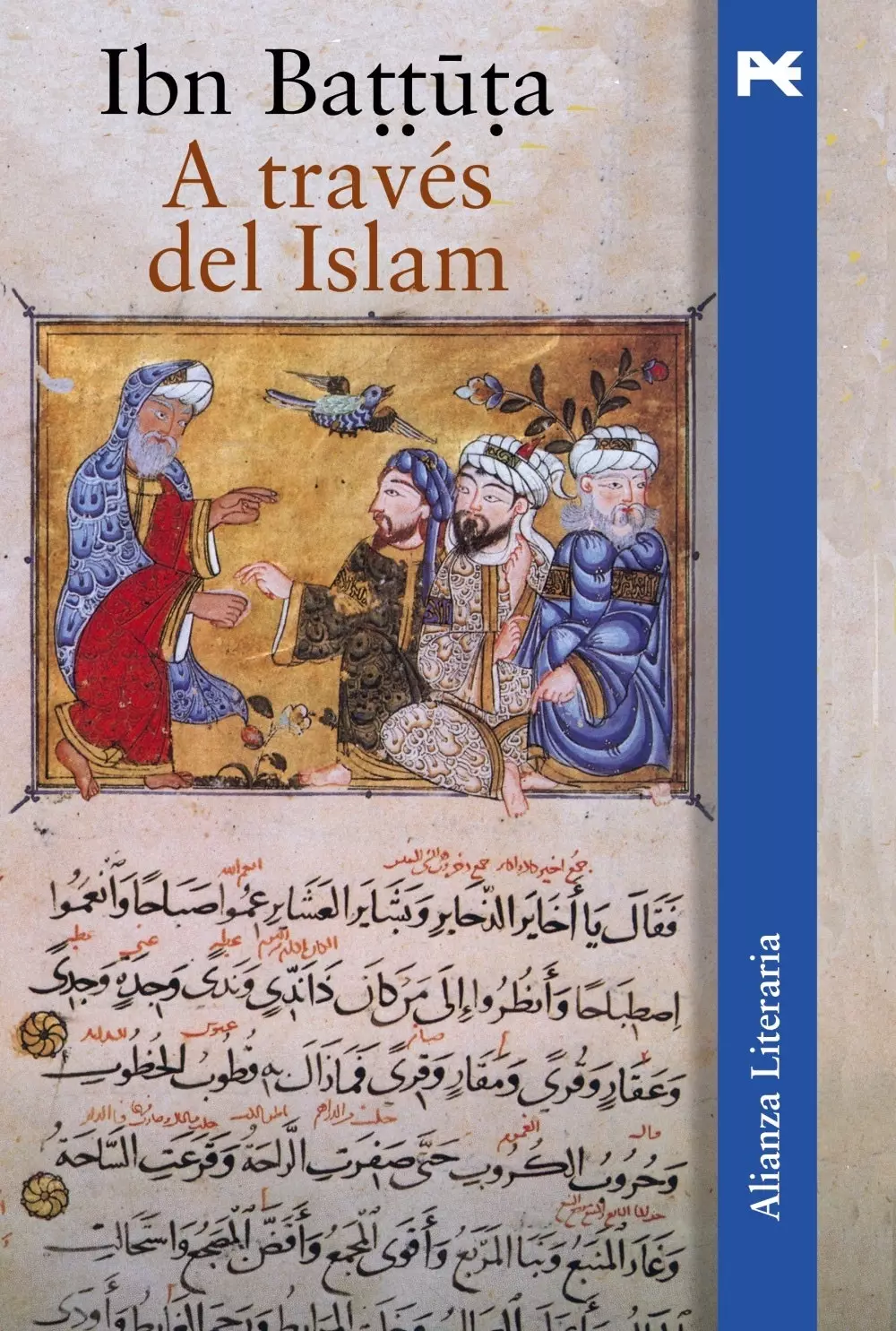
'Through Islam', Ibn Battuta, translation by Serafín Fanjul and Federico Arbós
Ibn Battuta was an excellent chronicler of travels, since he did not limit himself only to making a cold description of what was happening to him, but also he narrated it with passion and forced to resort to memory, since a good part of his notes were lost along the way.
Through Islam is the adventure of a pilgrim, a time, a journey and a vast geographical setting. It feeds on anecdotes; brief descriptions of cities, temples and places; narratives; miracles and wonders; historical events; natural History; events of the moment and is the highest exponent in his genre, since his reviews give a first-hand view of places and people that, until then, were only known in general terms.
Today, It is of great help to scholars of that period. Although the historical picture that he is drawing of the time is quite accurate, we must also warn that in the work there are contradictions and exaggerations, because sometimes his narration mixes reality and fiction. The original manuscript is in the National Library of Paris. It is surprising that this exceptional character is hardly known to us. Suffice it to say that the first translation of some of his works in our country is from the 20th century.
Ibn Battuta was an indefatigable traveller, a tenacious observer and a pious pilgrim who ate and slept where he could and suffered all kinds of hardships: assaults, shipwrecks, arrests, plagues, storms, conspiracies, revolts.
Although he also liked to enjoy the good life and its pleasures, since he was married several times, he tried to travel with a large harem and make friends with whoever he should wherever he went. Despite this, he was an absolute traveller, in the noblest sense of the word.
For Ibn Battuta, who defined himself as "the traveler of the Arabs and the Persians", what began as a journey of learning and pilgrimage, ended up becoming the central axis of his existence , because little else is known about his life when he returned home. As if his life was only worth telling while it was a nomad.
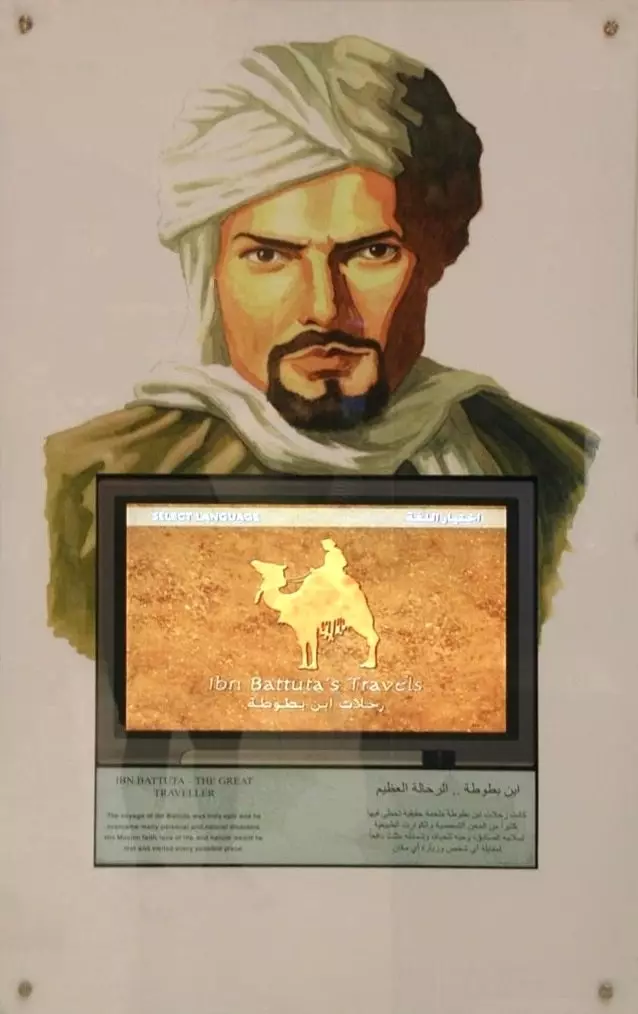
Interactive display about Ibn Battuta at the Ibn Battuta Mall in Dubai, United Arab Emirates
